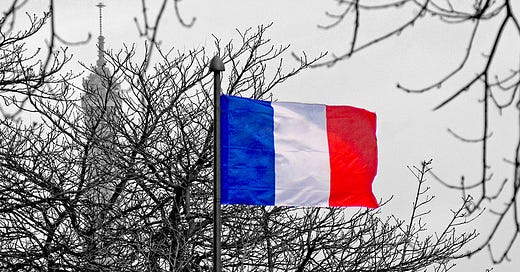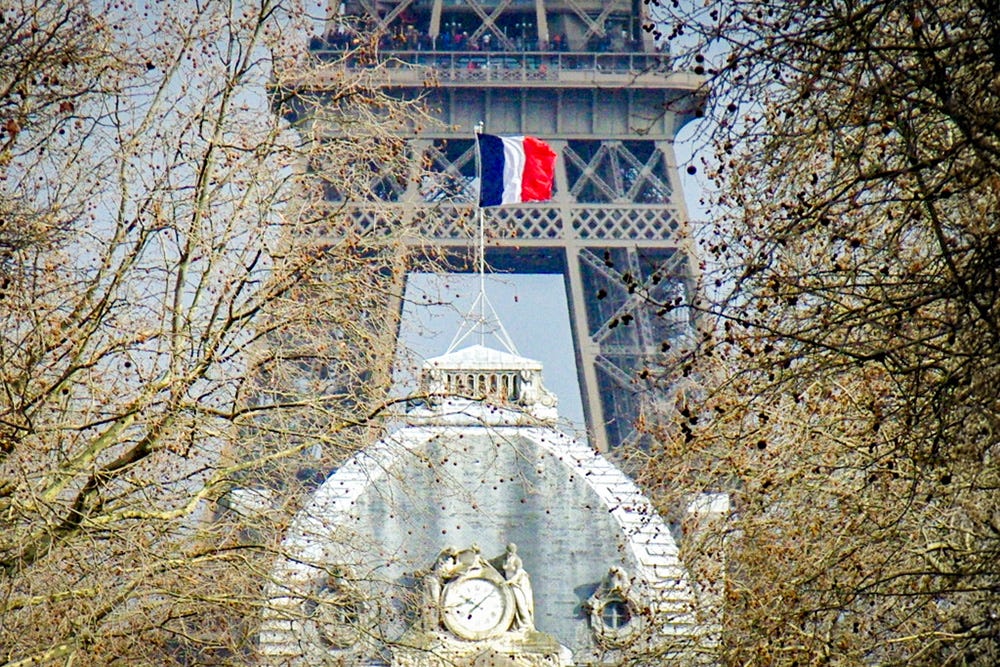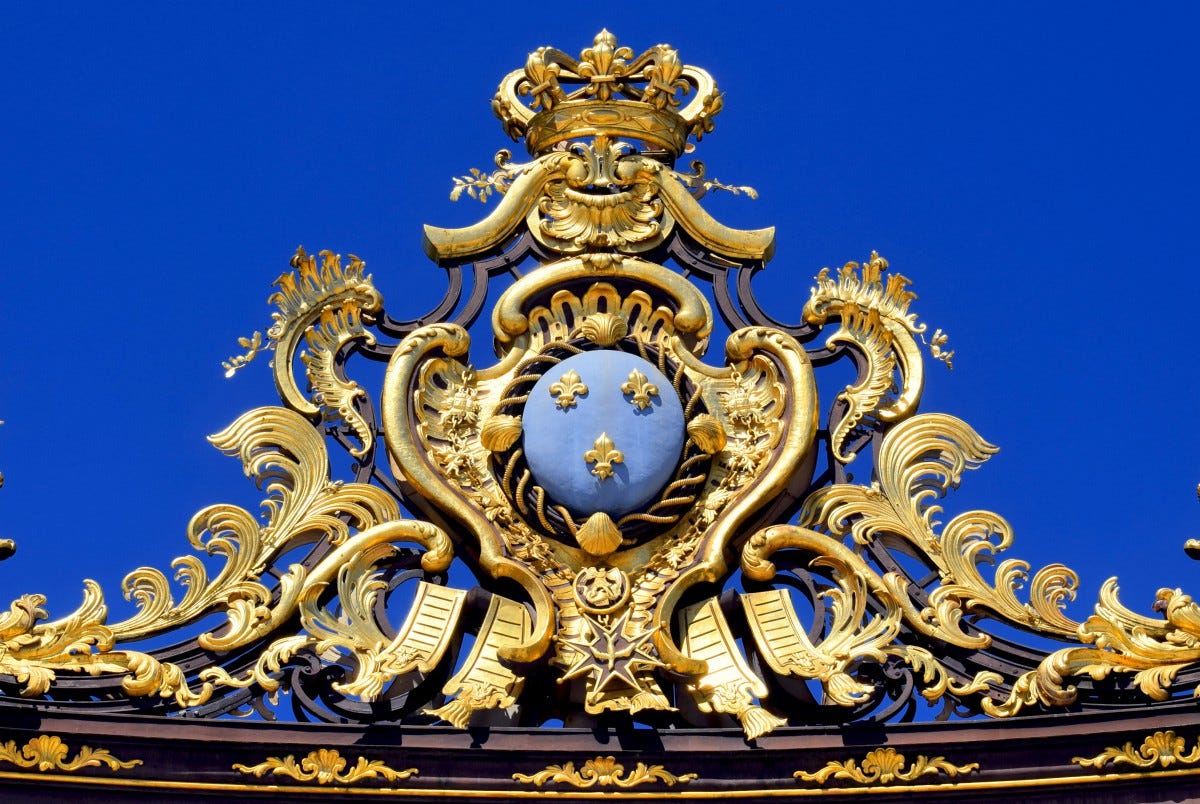The French Flag: Three Colours, a Thousand Stories 🇫🇷
Three colours, a thousand meanings — the story behind France’s most visible symbol.
Bonjour!
In this paid article, I have the pleasure to open a special five-part series leading up to Bastille Day, exploring the most iconic national symbols of the French Republic — starting with the one that flies highest and most often: the Tricolour.
The French flag isn’t just a flag. It’s a tapestry of history
You might think a flag is simple.
A few colours, a bit of fabric, something to hang outside a town hall or wave during a football match.
But the French flag? The Tricolour? That one is different.
It has been soaked in the blood of revolutionaries. Paraded by kings. Carried into battle by saints and martyrs, flown by republicans and monarchists alike.
It has been banned, burned, reinvented, lightened for diplomacy, darkened for defiance, and occasionally—rather awkwardly—forgotten.
And despite what schoolbooks might suggest, it didn’t simply appear in 1789 like a magic spell cast by liberty.
No, the story of the French flag begins much earlier.
In a monastery. In a battlefield. In a painter’s studio. In the mind of a draper named Étienne Marcel. In the cloak of a bishop named Martin.
And possibly—though it sounds absurd—in a cockade mistakenly pinned upside down.
It is a flag born of contradiction. Blue for Paris, or for the Virgin Mary? White for the king, or the people? Red for martyrdom, or massacre?
The Tricolour is a riddle.
And if you follow the threads closely, you’ll find that each colour tells a different tale.
Let’s begin with the ones that came before.
Before the Tricolour: Flags of a fractured kingdom
Long before France had a flag, it had banners. Not one, but many.
In medieval France, loyalty wasn’t to a nation. It was to your feudal lord, your bishop, your city, your abbey. And each had its own colours.
The red of the Oriflamme was the battle standard of Saint-Denis, a banner soaked in myth and martyrdom. According to legend, it was first carried by King Dagobert I and later waved above crusader armies. Its red was not symbolic of love, but of divine vengeance.
The white of the royal cornette emerged later, as the colour of military command. By the 17th century, white became the king’s colour—flown from ships, carried into war. When Henri IV rode into battle, he wore a white scarf to be seen by his troops: “Ralliez-vous à mon panache blanc !”.
Blue was more ambiguous. It was the colour of the Capetian kings, said to be inspired by the heavenly cloak of Saint Martin. But it was also the colour of Paris. In 1358, during a popular uprising, the merchant Étienne Marcel stormed the palace and placed his red-and-blue hood on the Dauphin’s head, in an act both symbolic and terrifying.
The fleur-de-lys reigned supreme over these colours, decorating royal shields and banners. But even the lily had rivals.
Joan of Arc’s banner, for example, was white, painted with the image of God between two angels. She claimed it was commanded by Heaven. And who were the kings to argue?
If you had lived in 1600, and someone asked you what the flag of France looked like, you’d have had no answer. It depended.
The navy flew one thing, the army another.
In times of war, banners were less about patriotism and more about recognition—who was with you, who wasn’t, and who was very likely to stab you.
Keep reading with a 7-day free trial
Subscribe to French Moments Newsletter to keep reading this post and get 7 days of free access to the full post archives.







